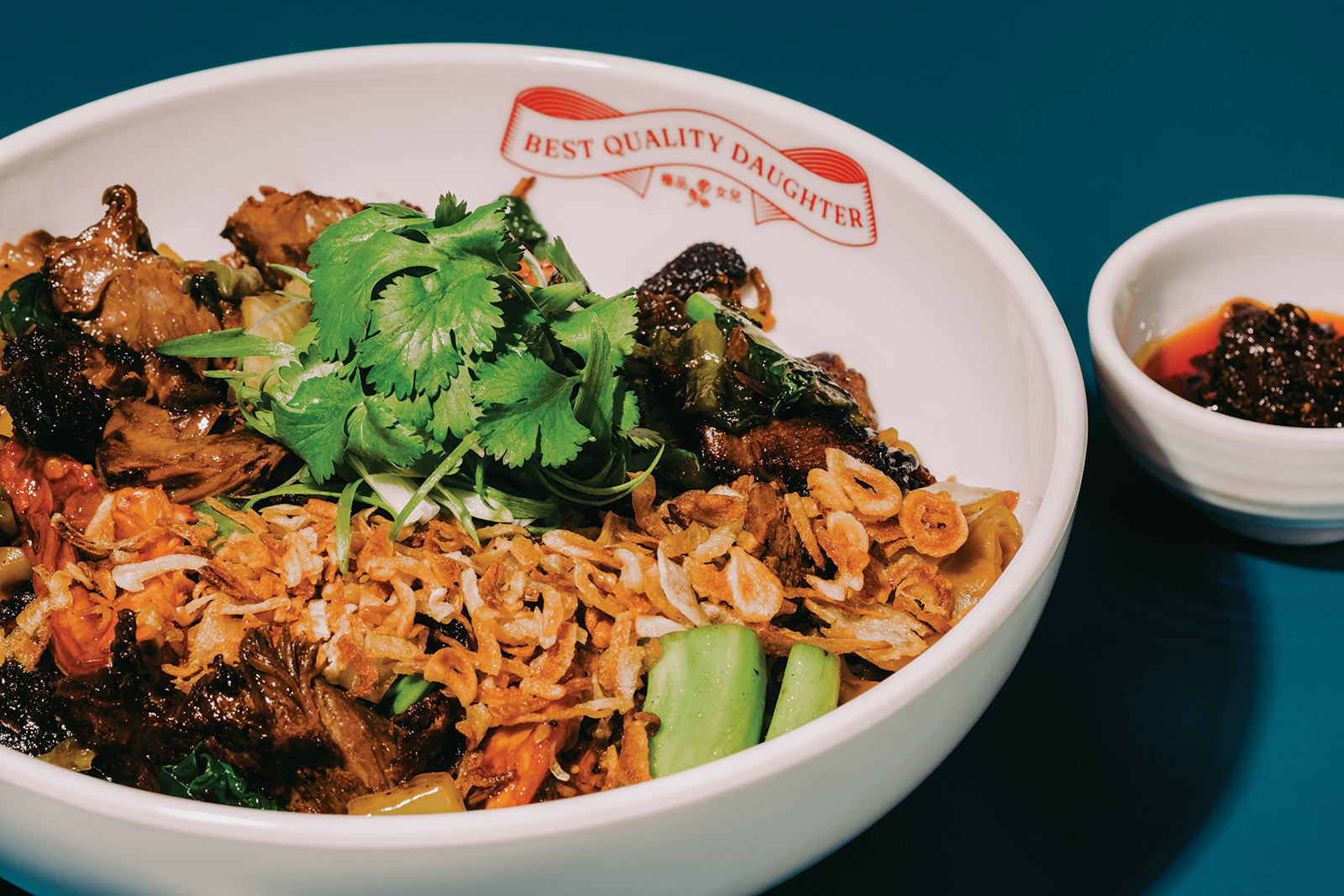By Alexander Müller
This opinion piece was originally published in German on Welthungerhilfe and has been translated to English.
António Guterres, the Secretary-General of the United Nations, sounded the alarm in the summer of 2019 about the rising number of hungry people. He proposed a World Food Systems Summit in autumn 2021 to bring renewed public attention to the issues of hunger reduction and sustainability and to set urgently needed new impetuses for a change of the entire food system.
This alarm call from Guterres came even before the outbreak of the global COVID-19 pandemic. While much about the pandemic is still unclear, we do know that it will continue to increase poverty and hunger at an unknown rate.
The ambitious goal of the summit requires us to be more specific about what the multilateral system must and can do to improve people’s lives, and not just discuss higher levels of ambition in the (virtual) conference rooms. That’s why the question of what has caused the fight against hunger to fail in the past decades must be at the forefront of the work.
There has been no shortage of summits and resolutions on hunger and sustainability in recent decades. Why is there still hunger in our world of plenty? Without a solid analysis of the lack of progress, there is a danger that more time will be lost with the new summit – and with it trust in the UN system. Or, depending on how you look at it, time will be bought to continue with the old system.
A very brief history of the UN summits
At the World Food Summit in Rome in 1996, heads of state resolved to halve the number of hungry people from 830 million to 415 million by 2015. In an action plan, member states of the UN’s Food and Agriculture Organization (FAO) made seven (self-) commitments to gradually eradicate hunger from the world. The goal of halving the absolute number of hungry people in 2015 was not achieved. And the concrete steps agreed upon to eradicate hunger were not subsequently implemented consistently. During the 2008 to 2009 food price crisis, FAO estimated that the number of hungry people could rise to 1 billion. In addition to the high prices for food, war and civil war, as well as long ignored and thus “chronic” crises (“protracted crisis”) had led to this development.
In 2015, the UN General Assembly in New York adopted 17 global Sustainable Development Goals (SDGs) to guide nothing less than the transformation of all member countries’ development paths toward sustainability. Goal 2 includes the elimination of hunger and malnutrition by 2030. Today, five years later, it must be noted that the achievement of this goal is very poor – even before COVID-19.
What does the summit need to achieve?
This year’s summit is an opportunity to initiate the necessary structural changes to achieve, through the implementation of SDG 2, that all people have access to healthy and sufficient food in 2030 and that the sustainability of food production is ensured. So, what needs to be decided at the level of the United Nations, by the Heads of State and Government, to achieve this goal through governance change?

UN secretary general António Guterres has stated, “If you don’t feed people, you feed conflict.” He will convene the Food Systems Summit this year. Courtesy of IAEA
To be successful, the summit must:
- Show in its preparation why the fight against hunger has not been successful so far and what consequences must be drawn,
- Integrate the climate crisis and the destruction of natural resources into a new effective strategy to fight hunger,
- Determine what governance is needed to initiate the necessary transformation of the food system – both at the level of government activities and in the governance of markets and the private sector.
Many countries lack sufficient political will to eradicate hunger once and for all. In 1948, the human right to food was mentioned in the Universal Declaration of Human Rights, and in 1976 it was established as international law in the UN Social Covenant. According to this, people must either have (natural) resources such as land and water to be able to produce enough food or have enough money to buy food. States have hereby entered into far-reaching obligations, and people have been granted fundamental rights.
The “Voluntary Guidelines on the Right to Food” adopted in 2004 laid down in concrete terms what must be done to realize this human right to food. So far, these guidelines have been poorly implemented, though positive exceptions occur every now and then, such as recently in the city of Liverpool. In case of any confusion, the right to food only means an entitlement to food aid in exceptional cases. States have made this special commitment to particularly vulnerable groups (children, women, the elderly and the sick). The calls by aid organizations to finally provide more money for humanitarian emergencies show that even this part of the commitment is not being fulfilled. Nevertheless, the summit must explicitly reaffirm the rights-based approach to hunger relief, especially in the time of a global pandemic.
There is enough for everyone
Today, more than enough kilocalories are produced to feed everyone. Globally, food production has kept pace with population growth and no one would have to go hungry: there is enough for everyone. Nevertheless, each year, one third of all food produced – about 1.3 billion tons, the equivalent weight of more than 58 Eiffel Towers – is thrown away.
The central problem is poverty
Food security has four dimensions: availability, access, utilization, and stability. It is not only the quantity and quality of available food that is important, but especially its distribution and nutritional practices. Poverty, not scarcity of food, is the central cause of hunger; COVID-19 has tragically confirmed this. In countries where there is insufficient social protection, hunger increases. In the U.S., for example, even before COVID-19, approximately 35 million people were recorded as temporarily “food insecure.” After the outbreak of COVID-19 and the resulting loss of income, lines stretched for miles outside food banks giving away food to the needy – and this in a country where anything is technologically possible in agricultural production. Conflict, economic shocks, and a lack of social policy can cause poverty to re-emerge in the short term and make access to food more difficult.

Food loss and waste generate 8 percent of global greenhouse gas emissions. Taz, Flickr
Cheap food is not a solution
The strategy thus far has been “let’s produce more and, above all, cheaper food.” This, in turn, has far-reaching individual and societal consequences. “Cheap” food is produced with very high external costs: environmental degradation, malnutrition due to “empty” calories, for example, without sufficient nutrients, and the destruction of social structures in rural regions.
Unsustainable agriculture impoverishes soils and destroys biodiversity. Farmers receive only low revenues for their products on the markets. As a result, many of them live in poverty, even though they produce most of the food in developing countries. Agricultural workers and especially migrant workers in agricultural production suffer from a high health risk when, for example, applying pesticides, and are paid miserably, even in Europe.
This initiates a vicious circle. Cheap food is very expensive for society due to the externalization of high environmental and health costs, while farmers and very many workers live in poverty. Alternative approaches such as “Fome Zero” in Brazil have provided a way out: distributing vouchers or cash to the needy improves access to food for the poor. At the same time, local markets are supported, thus securing and also increasing the incomes of small farmers. If poverty is the central problem, then social policy, living wages, redistribution and a fair world trade system are the answers. What will the summit say on these issues?
The “new” challenges: Climate, resources, COVID-19
The summit will take place under conditions of a deepening climate crisis, unchecked destruction of natural resources, and the global impact of the COVID-19 pandemic. Summit participants will need to incorporate these issues into their debates on food system transformation. Leaders, international and non-governmental organizations will also need to manage risk.
- The climate crisis must shape solution strategies. The food systems of the future must be as carbon neutral as possible and be adapted to a hotter planet with extreme weather events. For this we need guidelines. If this does not happen, subsequent summits will have to deal with massive humanitarian problems triggered by climate change and related migration. The excuse that the UNFCCC is responsible for climate must not apply, because without taking the climate crisis into account, there will be no transformation of the food system.
- Intensive (industrial?) agriculture is one of the main drivers for the degradation of natural resources like soil and water. This also includes the loss of agrobiodiversity, for example, the diversity of varieties of cereals and vegetables that are better adapted to their respective locations and correspond to the cultural habits of the people. While the market with hybrid seeds is secured by far-reaching legal regulations and is highly profitable, valuable agricultural genetic resources are lost every day, a result of thousands of years of breeding by farmers. These genetic resources are essential for adaptation to climate change and for continued production security. What is destroyed today could be sorely missed in tomorrow’s world. There will be no transformation of the food system without integrated and sustainable management of all natural resources.
- The global economic crisis caused by the worldwide COVID-19 pandemic will further increase poverty and hunger. At the summit, the heads of state and government must decide on appropriate measures to prevent the predicted increase in the number of poor and hungry people as far as possible and at least actively combat it. Massive financial programs have been launched worldwide to combat the crisis – the largest global investment program ever. And there is public talk about “building back better,” but so far only a few successful approaches can be seen.
Transformation needs governance
The economy of the food system sets massively wrong incentives and is an essential part of the problem.
The agricultural market is a complex mixture consisting of:
- Growing market power of large (multinational) corporations
- Weak market position of farmers
- Import/export tariffs and World Trade Organization rules
- More than USD 600 billion per year in agricultural subsidies
- Commodity futures speculation with agricultural commodities
- The growing link to global energy markets through “bioenergy” from agricultural commodities
- The growing demand in a booming bioeconomy for renewable resources for non-food uses, such as renewable feedstocks and industrial production
- The profitable investments in scarce land
- The huge profit opportunities for multinational corporations in growing agricultural and food markets, especially in Africa
Prices lie
Food prices do not tell the truth – in full cost accounting, it becomes clear that cheap food is very expensive because the hidden costs, the externalities, are not taken into account. Natural, human and social capital play no role in pricing. Soil fertility and biodiversity have no value. Destruction costs nothing.
Conversely, the positive effects of sustainable agriculture are also not taken into account. In the end, the high externalized costs are “socialized,” meaning the taxpayer has to pay for them. And the poorest are prevented from developing, for example, by the destruction of their natural capital. Thus, the ideology that only cheap food can feed the world is a double deception: If we add up all the costs, these “cheap” foods are actually very expensive. And they fuel a cycle that ends in hunger, malnutrition and environmental degradation on the one hand, and wealth and waste on the other.
The full cost of producing food must therefore play an important role in the transformation debate. A growing number of scientific studies in True Cost Accounting prove the misalignment of the current pricing system. The consequence, however, is not to simply make food more expensive and unaffordable for the poor. That is why poverty reduction must also be the focus. Access to healthy food must be improved. And so new business models and, thus, jobs that combine economic activity in changed markets with sustainability will also emerge. The old economy must give way to a “green” economy.
The way in which the far-reaching possibilities of digitalization are currently being used in the food industry also brings a number of advantages for the efficiency of processing and speeds up certain operations like payment, information or the control of complex processes. But it can also serve as a prime example of the question posed by Armin Nassehi: “For which problem is digitization a solution?” If research and implementation are primarily concerned with how to increase the efficiency of the existing system, then a failed system will become more efficient and cheaper in the conventional sense, but it will by no means initiate the necessary transformation of the existing non-sustainable system. Externalizing costs can only be handled better.

The striking contrast between the forest and agricultural landscape in Acre, Brazil. Kate Evans, CIFOR
Biased regulations
Social security and poverty reduction must become part of the transformation, and state action is required for this. After all, it is already not left to the markets alone to control food and agriculture. Subsidies, rules of world trade, international treaties (for example, the International Treaty on Plant Genetic Resources), the European Agricultural Policy, the Farm Bill in the U.S., sanitary and phytosanitary standards, and much more determine the economic system to the benefit of the large agri-food corporations and to the detriment of smaller producers and farmers.
The transformation of the current system therefore requires a change in global governance. The reform of the Committee on World Food Security (CFS) after the Rome Summits in 2008 and 2009 has remained unfinished. Positive approaches are visible, but after more than 10 years, additional and bold reform steps are urgently needed. The summit should adopt a mandate to reform the CFS with a clear timeline and agenda. Without such reform, the driving forces behind today’s widely lamented food system malaise will continue to determine the direction and pace of development.
The challenges are great, and the multilateral system is not in the best shape. There are also legitimate criticisms of the CFS and how it operates. But that is precisely why we need bold moves that go beyond non-binding declarations of intent.
Which incentives must come from the UN Food Systems Summit?
- The summit must pass resolutions on poverty reduction and social security, otherwise there will be no end to hunger. In crisis regions, humanitarian aid and conflict management must be the answer.
- The human right to food and the internationally agreed guidelines for achieving it must become the guiding principles for the summit’s decisions.
- The summit must address the central governance problem of the complex and globalized food system. The system of pricing and value must be changed to capture the true costs of the food system and to take advantage of new opportunities to steer it toward sustainability. Again, “It’s the economy, stupid!”
- Consideration must be presented on how to integrate multilateral coordination to address the climate crisis, halt the destruction of natural livelihoods, and effectively reduce poverty into the global governance of food system transformation. It is one of the central tasks of the UN to agree on global governance issues. A showcase of civil society and private sector projects may contribute positive examples, but it will not be able to initiate a structural transformation. So far, no one has explained what will be decided at this summit.
- The coordinated fight against the pandemic and its consequences must become the theme of the summit. The summit will also be a COVID-19 crisis summit – the problems caused by COVID-19 are simply too great. Transformation and crisis management must be complementary and not mutually exclusive. However, the necessary debates about the crisis and the required solutions to the problems must not be at the expense of the agenda that was actually planned. It would not be the first time that the urgency of the moment overrode the need for a better tomorrow.

© IASS; Photo: L. Ostermann
Alexander Müller is a former member of the Crop Trust Executive Board and the Managing Director of TMG – Think Tank for Sustainability and currently serves as a board member of CIFOR-ICRAF. Müller’s career gives him a unique insight into the world of agriculture and food. He has held various roles in German government as well as serving as the Assistant-Director General of the Food and Agriculture Organization of the United Nations (FAO). He was also appointed as study leader of the UNEP project “The Economics of Ecosystems and Biodiversity Agriculture and Food”.
Let's block ads! (Why?)
Article From & Read More ( Cheap Food is Expensive - Landscape News - Landscape News )
https://ift.tt/2Pdutyp
food














